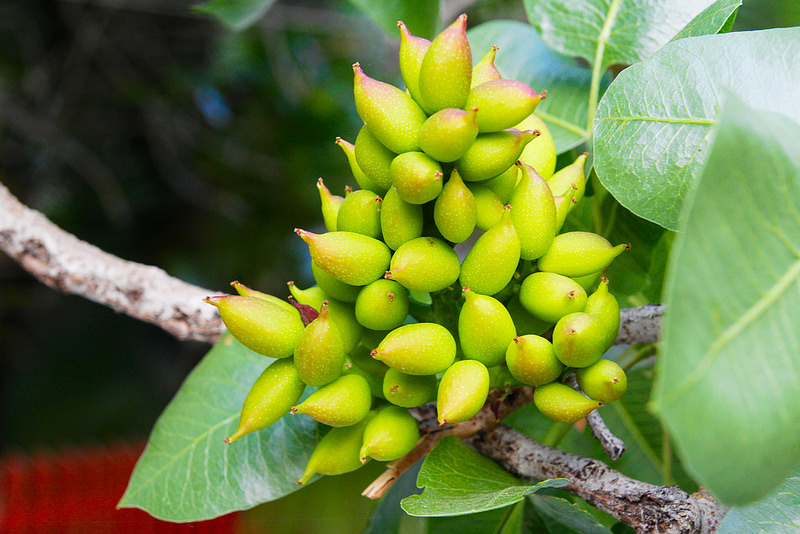- Read offline
- Access all content
- Build a list of your own favourites
- Search the contents with full-text search functionality
- ... and more!
fystíki aegínis
φυστίκι αιγίνης
Pistachios, or 'Aegina nuts' are among the best (if not THE best) in the world. They are a very fussy nut and only grow in a few places around the world, including the island of Aegina in the Saronic Gulf, in sight of the Parthenon.
They didn't always grow there. In 1896, a farmer named Nikolao Peroglou planted various nut trees on his land on Aegina. Most died on the dry chalky soil, but the pistachio thrived —and not just any pistachio but the less common, tastier, round variety.
Peroglou became an enthusiast for the nut, writing a book on the subject and giving cuttings to other farmers to grow. If you visit Aegina in September after the harvest, when the entire port is scented with fresh roasted pistachios, you can't eat enough.

Besides gobbling them up as snacks, Greek cooks have found good uses for pistachios: in baklava and other syrupy desserts, or ground up finely as a breading for chicken or fish, or stuffed in sausages or preserved in honey, which is delicious when poured over fresh yogurt.
In 1996 Greek pistachios were given Protected status (PDO or ΠΟΠ) by the European Union. The country's annual output is over 11,000 metric tons, making it Europe’s number one pistachio producer—and the sixth largest in the world, behind Iran, the US, China, Turkey and Syria.
Images by Danielle Scott, Grey World

